School parking
Download the City of Wanneroo School Parking fact sheet by clicking below:
Footpaths
Footpaths provide pedestrians with a safe alternative to walking on roads. Parked vehicles blocking any portion of the footpath, including the crossover (where your driveway and the footpath meet), pedestrians may be forced onto the road. This can be both frustrating and dangerous for pedestrians, especially those with prams, people with disabilities and young children.
No portion of a parked vehicle is permitted to be on, over or in front of a footpath.

No Stopping areas
No Stopping areas can be defined by signage or a continuous yellow line painted along the edge of a carriageway. A driver shall not stop on a length of carriageway, or in an area, to where no stopping restrictions apply.
Vehicles may only stop in these zones to comply with other regulations (for example at traffic lights or to avoid an accident). Drivers are also not permitted to drop off passengers/goods in 'No Stopping' areas.
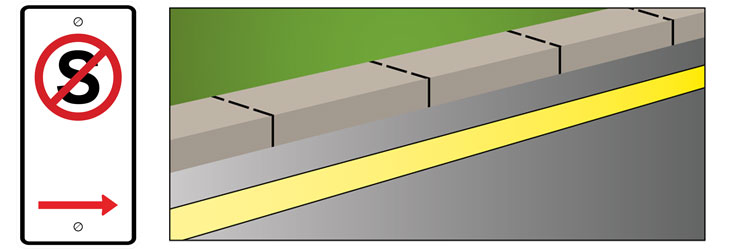
Facing the wrong direction on a road and in bays
Parking against the flow of traffic is illegal in Western Australia and can be hazardous, particularly when exiting from the parking place.
At all times you are required to park or stop your vehicle so it faces the same direction as the flow of traffic.
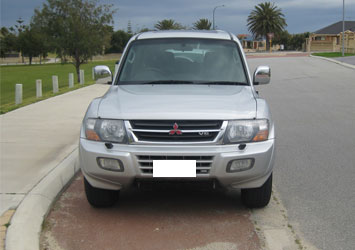
Median strip parking
Median strips are used to divide traffic flow and enhance safety on busy roads. Vehicles are not permitted to park or stop on any median strip regardless of whether signs have been installed.
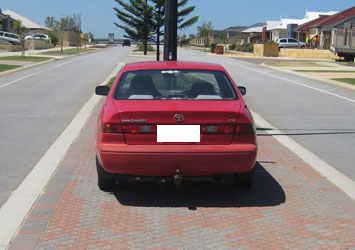
Verge parking
Trailers, caravans and buses cannot be parked on verges, regardless if the driver is the occupier of the property.
To park on a street verge or nature strip, permission from the owner or occupier of the property immediately adjacent to the verge must be given. Signage may be installed by the City to restrict or prohibit verge parking and must be adhered to regardless of whether permission by the owner or occupier has been given. These signs apply to all drivers including those of the adjoining residence.
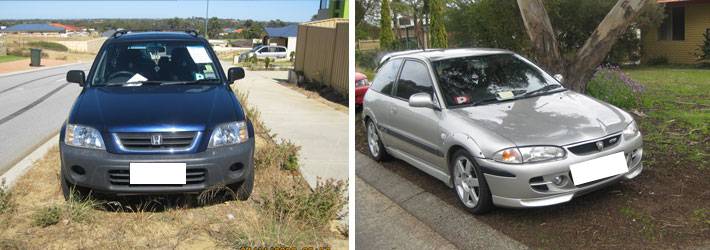
Advertising vehicles for sale in a public place
Vehicles cannot be advertised for sale in public places including roadways, median strips and verges, regardless of whether they are parked legally.
Vehicles advertised for sale in public places are generally parked in highly visible locations that can distract drivers and obscure the vision of other motorists.
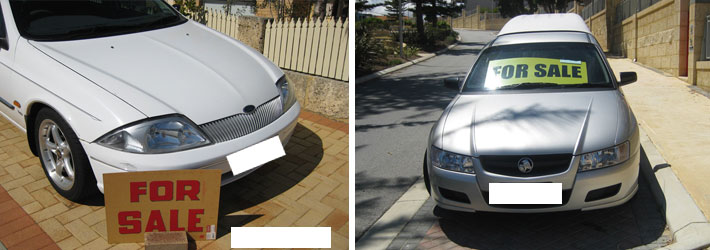
No Parking areas
A driver shall not stop on a length of carriageway or in an area to which a 'No Parking' sign applies, unless the driver:
- is dropping off, or picking up passengers or goods; and
- does not leave the vehicle unattended; and
- completes the dropping off or picking up of the passengers or goods within two minutes after stopping
No Parking sign (for a length of a carriageway)
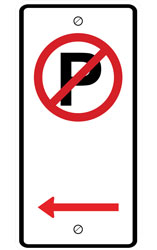
Commercial vehicle parking
Stopping on a carriageway - heavy and long vehicles
Unless engaged in the picking up or setting down of goods a person must not park on a carriageway, for any period exceeding one hour, a vehicle or any combination of vehicles that is 7.5 metres or more in length or exceeds a GVM of 3 tonnes (including any projection or load).
Commercial vehicles parking on a verge
Commercial vehicles may park on a verge provided that no obstruction is caused to the passage of any vehicles or person using a carriageway or path.
The commercial vehicle must also be actively engaged in loading or unloading goods to the premises adjacent to the verge on which the vehicle is parked.
If the verge has restrictive signs installed, the signage must be adhered to.
Commercial vehicle means:
- a motor vehicle constructed for the conveyance of goods or merchandise, or for the conveyance of materials used in any trade, business, industry or work whatsoever, other than a motor vehicle for the conveyance of passengers; and
- includes any motor vehicle that is designed primarily for the carriage of persons, but which has been fitted or adapted for the conveyance of the goods, merchandise or materials referred to, and is in fact used for that purpose
ACROD parking
ACROD parking bays are reserved for people with disabilities that have a valid ACROD permit.
These parking bays are placed in the most convenient locations and as such are preferred parking spots. Regardless of how long you intend to park and whether other ACROD parking is available, non-ACROD permit holder are prohibited unconditionally from parking in these bays.
Disabled parking sign / road marking
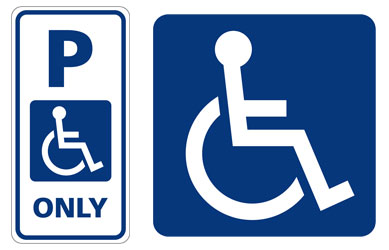
Parking near bus stops
A driver must not stop a vehicle so that any portion of the vehicle is within 20 metres of the approach side, or 10 metres of the departure side of:
- a sign inscribed with the words 'Bus Stop' or 'Hail Bus Here' (or with equivalent symbols depicting these purposes) unless the vehicle is a bus stopped to take up or set down passengers; or
- a children's crossing or pedestrian crossing
'Bus' means a motor vehicle, built mainly to carry people, that seats over 12 adults including the driver
Parking near pedestrian crossings
A person must not park a vehicle so that any portion of the vehicle is within 20 metres of the approach side, or within 10 metres of the departure side of a children or pedestrian crossing (this includes school crossings) regardless of whether there are any signs or lines.

Parking near corners
Vehicles may not park within 10 metres of a corner where no traffic lights exist (diagram 'a' below).
Vehicles may not park within 20 metres from a corner at which traffic lights are installed (diagram 'b' below).
This area must be kept clear so other road users have a clear view when approaching and leaving. Vehicles that are parked too close to a corner pose a danger to other road users negotiating the corner. In particular trucks and buses that need this area to negotiate the turn safely.
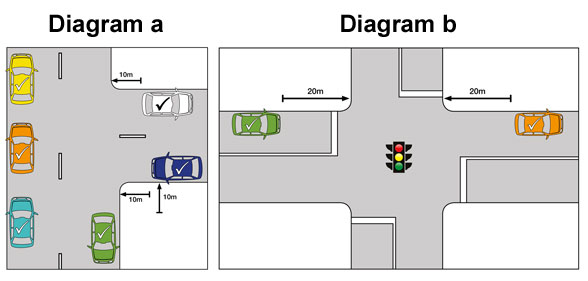
Loading zones
Loading bays are sign posted and marked by yellow lines (either continuous or dashed) and are reserved for commercial vehicles that are engaged in the pick up or setting down of goods. Commercial vehicles must not remain in that loading zone for longer than a time indicated on the 'loading zone' sign or for longer than 30 minutes if no time is indicated on the 'loading zone' sign.
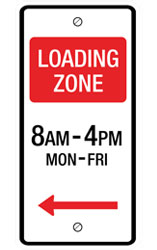
Stopping near fire hydrant
A driver shall not stop a vehicle so that any portion of the vehicle is within one metre of a fire hydrant or fire plug, or of any sign or mark indicating the existence of a fire hydrant or fire plug unattended.
A white 'H' road marking indicates the existence of a fire hydrant.
Double parking
A driver must not stop a vehicle so that any portion of the vehicle is between any other stopped vehicle and the centre of the carriageway.
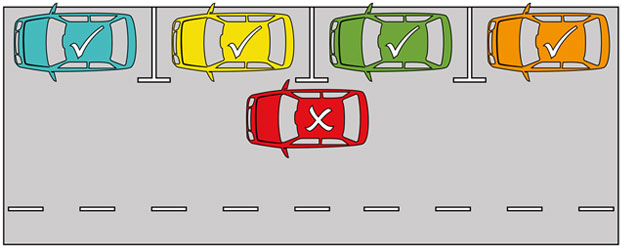
Obstructing access to a driveway
A driver shall not stop a vehicle so that any portion of the vehicle is in front of a path and/or driveway crossover in a position that obstructs access by vehicles or pedestrians to or from that path.
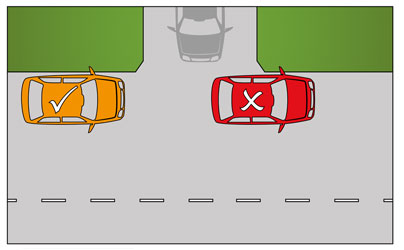
Parking on a carriageway
If the carriageway has a continuous dividing line, dividing strip or median strip, the driver of a vehicle shall position the vehicle at least 3 metres from the continuous line, dividing strip or median strip (unless otherwise indicated by information on or with a parking control sign).
Image below:
Parallel parking - minimum distance from other vehicles and dividing strip. In this example, the vehicles marked with an 'X' are parked in contravention of legislation.
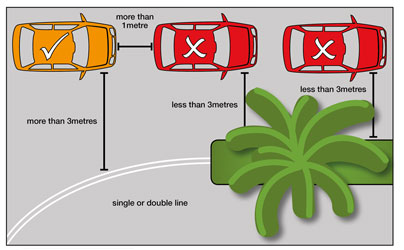
Parking areas/bays
- When parking a vehicle in a thoroughfare or parking area, the vehicle must be parked wholly within a bay.
- Where the parking bay is set out parallel to the kerb, the vehicle must be parked as close to the kerb as is practicable and also be facing the direction of the movement of the traffic on the side where the bay is situated.
- If a vehicle is too long or too wide to fit completely within a single parking bay, the vehicle must be parked within the minimum number of parking bays required to park the vehicle.
No parking over 24 hours
Parking a vehicle in a public place (includes verge, street, car park, any parking in a public area) in excess of 24 hours is considered to be causing an obstruction.
Private Property Parking Agreement
Download the City of Wanneroo Parking fact sheet by clicking below: